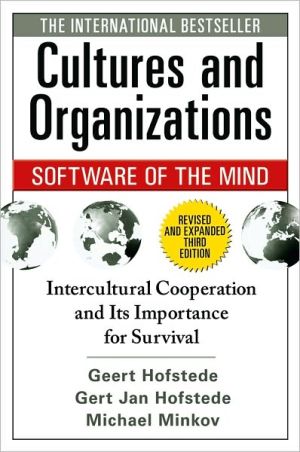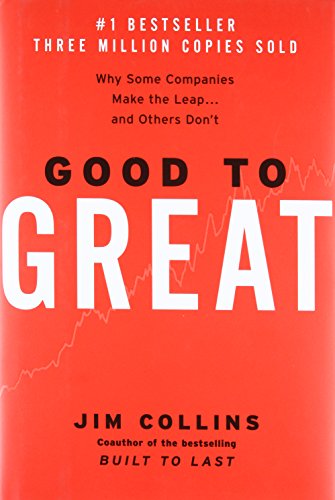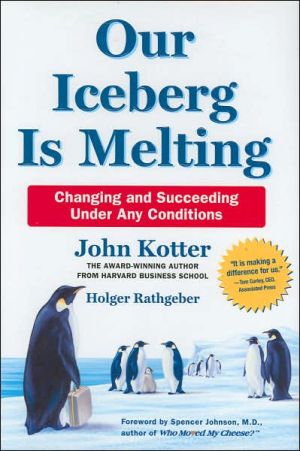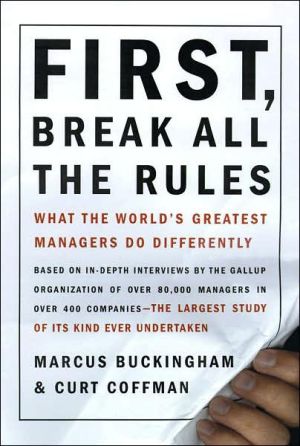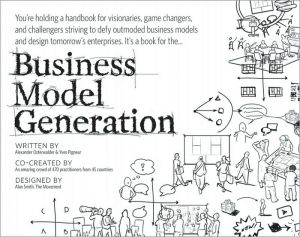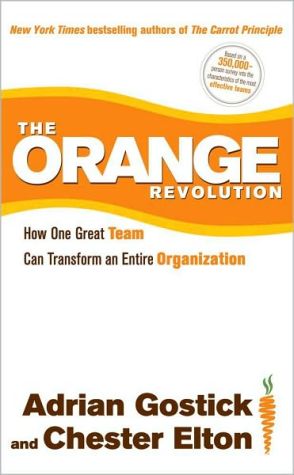Cultures and Organizations: Software for the Mind, Third Edition
The revolutionary study of how the place where we\ grew up shapes the way we think, feel, and act—\ with new dimensions and perspectives\ Based on research conducted in more than seventy countries over a forty-year span,\ Cultures and Organizations examines what drives people apart—when cooperation\ is so clearly in everyone’s interest. With major new contributions from Michael\ Minkov’s analysis of data from the World Values Survey, as well as an account of\ the evolution of cultures by Gert...
Search in google:
The international bestseller on managing cross-cultural workforces—expanded and updated!Named one of the top 20 most influential business thinkers of 2008 by The Wall Street Journal, business anthropologist Geert Hofstede has fully updated his classic work on how the place where we grew up shapes the way we think, feel, and act.Since its original publication in 1991, Cultures and Organizations has been helping business leaders understand how people think as members of a group—which dramatically increases managers’ effectiveness leading and developing cross-cultural workforces. This groundbreaking work reveals: The unexamined rules behind the thoughts and emotions of people of different cultures Ways in which cultures differ in the areas of collectivism/individualism, assertiveness/modesty, tolerance for ambiguity, and deferment of gratification How organizational cultures differ from national cultures, and how they can be managedNew material in this expanded third edition includes the latest data from the author’s ongoing field research and new insight into how cultural factors contributed to the current economic situation.Cultures and Organizations offers managers practical solutions for solving conflict between different groups and turning cultural differences to their advantage.Geert Hofstede (Maastricht, the Netherlands) is professor emeritus of Organizational Anthropology and International Management at the University of Maastricht, the Netherlands. He is also is the founder and director emeritus of the Institute for Research on Intercultural Cooperation (IRIC). He is a world-renowned business anthropologist, and founded and managed the Personnel Research Department of IBM Europe. He is a consultant to business and government organizations in Europe, Asia, and North America. He recently became the first Dutch author elected as Fellow of the Academy of Management, an award shared by some of the most influential management authors of the last 50 years, including Peter Drucker, Rosabeth Moss Kanter, Henry Mintzberg, and Michael Porter. Hofstede is also Distinguished Scholar of the Academy of International Business, Fellow of the Academy of Management and Doctor Honoris Causa of Nyenrode University in the Netherlands.Gert-Jan Hofstede (Wageningen, the Netherlands), is a Ph.D. and a Professor at Wageningen University with extensive hands-on experience in teaching Intercultural Communication.Michael Minkov (Sofia, Bulgaria) is a Ph.D. and Principal Lecturer at International University College in Sofia, Bulgaria.
Preface xiPart I The Concept of Culture1 The Rules of the Social Game 3Different Minds but Common Problems 4Culture as Mental Programming 4Symbols, Heroes, Rituals, and Values 7Culture Reproduces Itself 10No Group Can Escape Culture 11Values and the Moral Circle 12Boundaries of the Moral Circle: Religion and Philosophy 13Beyond Race and Family 14We and They 16Ideologies as Group Markers 17Layers of Culture 17Culture Change: Changing Practices, Stable Values 18National Culture Differences 20National Identities, Values, and Institutions 22What About National Management Cultures? 24Cultural Relativism 25Culture as a Phoenix 262 Studying Cultural Differences 27Measuring Values 28Dimensions of National Cultures 29Using Correlations 32Replications of the IBM Research 34Extending the IBM Model: The Chinese Value Survey 37Validation of the Country Culture Scores against Other Measures 38Culture Scores and Personality Scores: No Reason for Stereotyping 39Other Classifications of National Cultures 40A Second Expansion of the Hofstede Dimensional Model: Minkov's Exploration of the World Values Survey 44Cultural Differences According to Region, Ethnicity, Religion, Gender, Generation, and Class 45Organizational Cultures 47Reading Mental Programs: Suggestions for Researchers 47Part II Dimensions of National Cultures3 More Equal than Others 53Inequality in Society 54Measuring the Degree of Inequality in Society: The Power Distance Index 55Power Distance Defined 60Power Distance in Replication Studies 62Power Distance Differences within Countries: Social Class, Education Level, and Occupation 64Measures Associated with Power Distance: The Structure in This and Following Chapters 66Power Distance Difference among Countries: Roots in the Family 67Power Distance at School 69Power Distance and Health Care 71Power Distance in the Workplace 73Power Distance and the State 75Power Distance and Ideas 79Origins of Power Distance Differences 82The Future of Power Distance Differences 864 I, We, and They 89The Individual and the Collective in Society 90Measuring the Degree of Individualism in Society 92Individualism and Collectivism in the World Values Survey: Universalism Versus Exclusionism 94Individualism and Collectivism in Other Cross-National Studies 99Are Individualism and Collectivism One or Two Dimensions? 102Collectivism Versus Power Distance 102Individualism and Collectivism According to Occupation 105Individualism and Collectivism in the Family 106Language, Personality, and Behavior in Individualist and Collectivist Cultures 112Individualism and Collectivism at School 117Individualism and Collectivism in the Workplace 119Individualism, Collectivism, and the Internet 123Individualism, Collectivism, and the State 125Individualism, Collectivism, and Ideas 127Origins of Individualism-Collectivism Differences 131The Future of Individualism and Collectivism 1335 He, She, and(S)he 135Assertiveness Versus Modesty 136Genders and Gender Roles 137Masculinity-Femininity as a Dimension of Societal Culture 138Masculinity and Femininity in Other Cross-National Studies 144Masculinity Versus Individualism 146Are Masculinity and Femininity One or Two Dimensions? 146Country Masculinity Scores by Gender and Gender Scores by Age 148Masculinity and Femininity According to Occupation 150Masculinity and Femininity in the Family 151Masculinity and Femininity in Gender Roles and Sex 154Masculinity and Femininity in Education 158Masculinity and Femininity in Shopping 163Masculinity and Femininity in the Workplace 164Masculinity, Femininity, and the State 170Masculinity, Femininity, and Religion 175Origins of Masculinity-Femininity Differences 180The Future of Differences in Masculinity and Femininity 1846 What Is Different Is Dangerous 187The Avoidance of Uncertainty 188Measuring the (In)tolerance of Ambiguity in Society: The Uncertainty-Avoidance Index 190Uncertainty Avoidance and Anxiety 195Uncertainty Avoidance Is Not the Same as Risk Avoidance 197Uncertainty Avoidance in Replication Studies: Project GLOBE 198Uncertainty Avoidance According to Occupation, Gender, and Age 199Uncertainty Avoidance in the Family 200Uncertainty Avoidance, Health, and (Un)happiness 202Uncertainty Avoidance at School 205Uncertainty Avoidance in Shopping 206Uncertainty Avoidance in the Workplace 208Uncertainty Avoidance, Masculinity, and Motivation 213Uncertainty Avoidance, the Citizen, and the State 216Uncertainty Avoidance and Corruption 221Uncertainty Avoidance, Xenophobia, and Nationalism 224Uncertainty Avoidance, Religion, and Ideas 226Origins of Uncertainty-Avoidance Differences 232The Future of Uncertainty-Avoidance Differences 2337 Yesterday, Now, or Later? 235National Values and the Teachings of Confucius 236Implications of LTO-CVS Differences for Family Life 240Implications of LTO-CVS Differences for Business 242Implications of LTO-CVS Differences for Ways of Thinking 246Long-Term Orientation Scores Based on World Values Survey Data 252Long-Term Orientation and the GLOBE Dimensions 259Long- and Short-Term Orientation, Family Relations, and School Results 260Long- and Short-Term Orientation and Economic Growth 262Economic Growth and Politics 267Fundamentalisms as Short-Term Orientation 269Short-Term Orientation in Africa 271The Future of Long- and Short-Term Orientation 2748 Light or Dark? 277The Nature of Subjective Well-Being 278Subjective Well-Being and the World Values Survey 279Indulgence Versus Restraint as a Societal Dimension 280Indulgence Versus Restraint and Subjective Well-Being in Other Cross-National Studies 288Indulgence Versus Restraint, Subjective Health, Optimism, and Birthrates 289Indulgence Versus Restraint, Importance of Friends, and Consumer Attitudes 290Indulgence Versus Restraint and Sexual Relationships 293Indulgence Versus Restraint in the Workplace 294Indulgence Versus Restraint and the State 295Origins of Societal Differences in Indulgence Versus Restraint 296Part III Cultures in Organizations9 Pyramids, Machines, Markets, and Families: Organizing Across Nations 301Implicit Models of Organizations 302Management Professors Are Human 307Culture and Organizational Structure: Elaborating on Mintzberg 312Planning, Control, and Accounting 315Corporate Governance and Business Goals 320Motivation Theories and Practices 327Leadership, Decision Making, and Empowerment 331Performance Appraisal and Management by Objectives 334Management Training and Organization Development 336Conclusion: Nationality Defines Organizational Rationality 33710 The Elephant and the Stork: Organizational Cultures 341The Organizational Culture Craze 343Differences between Organizational and National Cultures: The IRIC Project 346Qualitative and Quantitative Approaches in the IRIC Project 349Results of the In-Depth Interviews: The SAS Case 351Results of the Survey: Six Dimensions of Organizational Cultures 353The Scope for Competitive Advantages in Cultural Matters 358Organizational Culture and Other Organizational Characteristics 360Organizational Subcultures 364Individual Perceptions of Organizational Cultures 366Gardens, Bouquets, and Flowers of Social Science 368Occupational Cultures 368Conclusions from the IRIC Research Project: Dimensions Versus Gestalts 370Managing (with) Organizational Culture 371Part IV Implications11 Intercultural Encounters 381Intended Versus Unintended Intercultural Conflict 382Culture Shock and Acculturation 384Ethnocentrism and Xenophilia 387Group Encounters: Auto- and Heterostereotypes 387Language and Humor 388The Influence of Communication Technologies 391Intercultural Encounters in Tourism 392Intercultural Encounters in Schools 393Minorities, Migrants, and Refugees 395Intercultural Negotiations 399Multinational Business Organizations 402Coordinating Multinationals: Structure Should Follow Culture 406Expanding Multinationals: International Mergers and Other Ventures 407International Marketing, Advertising, and Consumer Behavior 409International Politics and International Organizations 412Economic Development, Nondevelopment, and Development Cooperation 416Learning Intercultural Communication 419Educating for Intercultural Understanding: Suggestions for Parents 423Spreading Multicultural Understanding: The Role of the Media 425Global Challenges Call for Intercultural Cooperation 42612 The Evolution of Cultures 431A Time-Machine Journey Through History 433Five Million to One Million Years Ago: Lonely Planet 434One Million to Forty Thousand Years Ago: Ice and Fire 436Forty Thousand to Ten Thousand Years Ago: Creative Spark, Extermination 438Twelve Thousand to Seven Thousand Five Hundred Years Ago: Villages and Agriculture 442Seven Thousand Five Hundred Years Ago Until Now: Large-Scale Civilizations 447Sources of Cultural Diversity and Change 453The End of History? No! 455The Essence of Evolution 456Evolution: More than Genes 459Evolution Beyond Selfishness: Groups over Individuals 464Individuals and Institutions in the Stream of Life 466Evolution at Work Today 468The Future of Culture 473Notes 479Glossary 515Bibliography 525Name Index 547Subject Index 549
